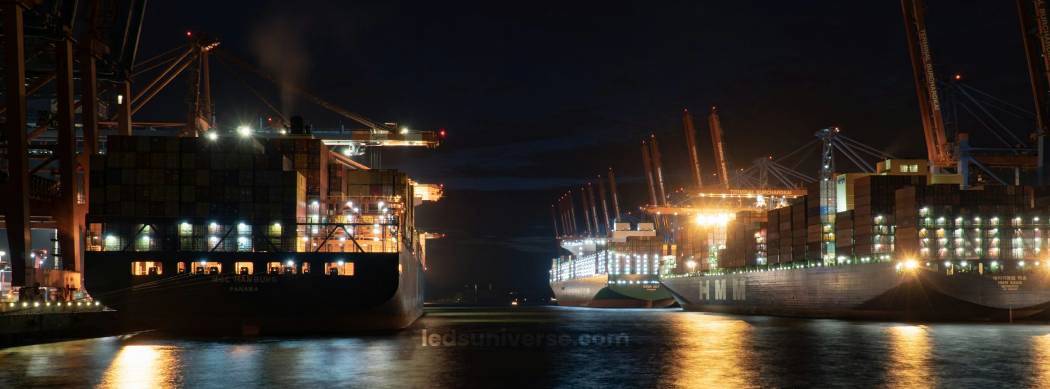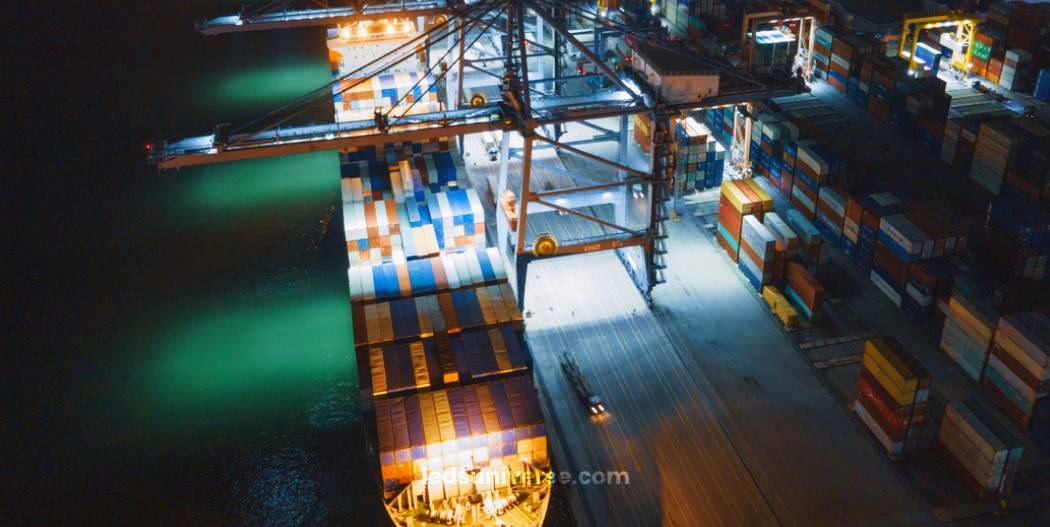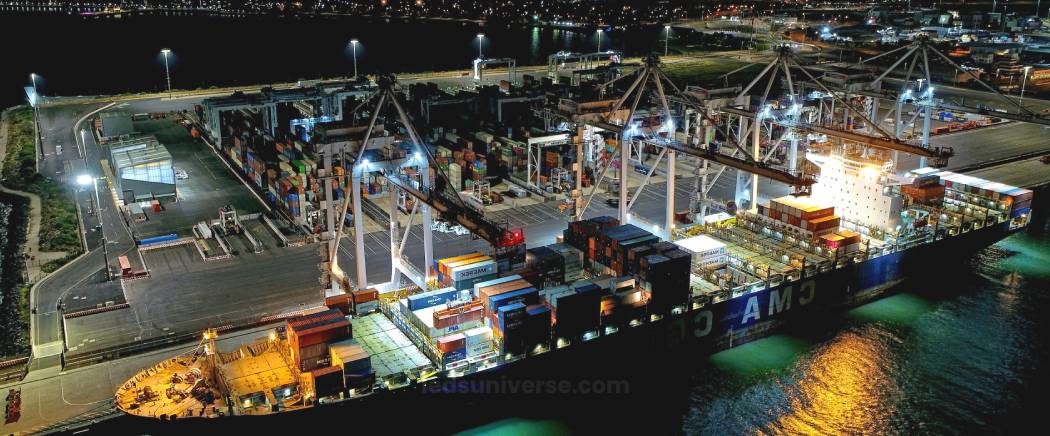
Solar seaport lighting offers a transformative solution, utilizing renewable energy to enhance visibility and safety while reducing environmental impact. By harnessing the power of the sun, seaports can achieve energy savings and foster a greener future in maritime logistics. The adoption of solar lighting systems represents a forward-thinking approach to addressing the pressing challenges faced by the industry, aligning operational needs with sustainable practices.
The effective operation of these hubs relies heavily on robust infrastructure, including effective lighting systems. Traditional lighting solutions, primarily powered by fossil fuels, have been the norm. However, the rise of solar technology presents a sustainable alternative that addresses both environmental concerns and operational efficiencies. Solar seaport lighting has emerged as a promising solution, harnessing the power of the sun to illuminate these critical areas.
Reach out for free lighting consultation
Table of Contents
ToggleSolar seaport lighting systems offer numerous advantages that can enhance operational efficiency while promoting sustainability. Utilizing renewable energy sources, these systems significantly reduce the reliance on non-renewable power. Transitioning to solar-powered lighting systems minimizes greenhouse gas emissions, contributing to a cleaner environment.
The shift toward solar seaport lighting has far-reaching positive effects on the environment. Traditional lighting systems often rely on fossil fuels, which contribute to air pollution and climate change. By utilizing solar energy, seaports can drastically reduce their carbon emissions. This transition not only aids in global efforts to combat climate change but also enhances local air quality, benefiting both port workers and surrounding communities. Furthermore, solar lighting systems can integrate with existing green initiatives at seaports, such as the use of electric vehicles or renewable energy sources for cargo handling, creating a holistic approach to sustainability.

The economic benefits of solar lighting are compelling. By harnessing solar energy, seaports can drastically lower their electricity costs. While the initial investment in solar technology may be higher than traditional systems, the long-term savings on energy bills and maintenance costs make solar lighting a financially sound choice. The use of solar-powered lights reduces operational expenses over time, allowing seaports to allocate resources to other essential areas.
In addition to energy cost savings, many governments offer incentives for adopting renewable energy solutions. These incentives may include tax credits, grants, or low-interest loans, further reducing the financial burden associated with the transition to solar lighting. As these policies become more common, the financial viability of solar lighting solutions for seaports continues to improve.
Safety is a major consideration in seaport operations. Adequate lighting is essential for safe navigation and cargo handling. Solar seaport lighting enhances visibility during nighttime operations, thereby reducing the risk of accidents. Well-lit areas can facilitate better movement for vehicles and pedestrians, promoting overall safety within port facilities.
In addition to enhancing safety, solar lighting systems also play a role in improving security. Criminal activities, such as theft and vandalism, are often deterred by bright lighting. Solar-powered lights can be installed in strategic locations, such as entry and exit points, storage areas, and along pathways, to create a well-illuminated environment. This not only protects valuable cargo and equipment but also instills a sense of security for workers and visitors.
One of the most significant benefits of solar seaport lighting is its potential to reduce the overall carbon footprint of port operations. By relying on renewable energy, seaports can significantly lower their greenhouse gas emissions. The transportation sector, including shipping and logistics, is one of the largest contributors to global carbon emissions. Transitioning to solar lighting helps mitigate this impact, aligning seaport operations with broader sustainability goals.
Moreover, solar lighting can be a part of a seaport’s sustainability branding. Ports that adopt renewable energy solutions often enhance their reputation as environmentally conscious entities. This not only attracts eco-friendly companies but can also lead to partnerships with organizations focused on sustainability initiatives.
The long-term cost savings associated with solar seaport lighting are substantial. While the initial installation costs may be higher than traditional lighting systems, the operational savings quickly accumulate. Solar lights require minimal maintenance compared to conventional systems, which often rely on costly bulbs and frequent replacements. The durability and longevity of LED fixtures used in solar lighting systems contribute to these savings.
Additionally, the decrease in energy consumption results in lower utility bills. Over time, these savings can offset the initial investment, making solar lighting a financially viable option for seaports. Furthermore, as energy prices continue to rise, the savings from solar lighting systems will become even more pronounced, providing seaports with greater financial stability.
Effective lighting is crucial for enhancing operational efficiency within seaports. Well-lit areas facilitate smoother logistics, enabling better visibility for workers and equipment during loading and unloading activities. Solar lighting systems can be designed to adapt to specific operational needs, ensuring that high-traffic areas are adequately illuminated.
By reducing downtime caused by poor visibility, solar lighting can improve productivity within port operations. The ability to extend operational hours during the night can also enhance efficiency, allowing for more flexibility in scheduling activities. This adaptability is particularly valuable in busy ports that handle significant volumes of cargo, where every minute counts.

The transition to solar seaport lighting promotes energy independence by reducing reliance on external energy sources. Many seaports are located in remote areas with limited access to traditional electrical grids. Solar lighting systems allow these ports to operate independently, generating their own power and reducing vulnerability to fluctuations in energy prices. This independence is especially crucial during emergencies, where access to stable electricity may be compromised.
Additionally, the adoption of solar energy contributes to a more resilient energy infrastructure. By diversifying energy sources, seaports can better withstand disruptions caused by natural disasters or geopolitical events. This resilience is particularly relevant as climate change continues to impact global supply chains.
The efficiency and effectiveness of solar seaport lighting systems rely on several key components. Understanding these elements provides insights into how these systems function and deliver illumination.
| Component | Description | Advantages |
|---|---|---|
| Solar Panels | Capture sunlight and convert it into electricity | Renewable energy source, reduces carbon emissions |
| Battery Storage | Stores energy generated during the day | Ensures continuous power supply |
| LED Fixtures | Provide illumination with high energy efficiency | Long lifespan, low maintenance, high light output |
Through thoughtful design and implementation, solar seaport lighting has the potential to redefine how ports illuminate their operations while contributing to global sustainability efforts.
Designing and implementing a solar seaport lighting system involves several steps, each contributing to the overall success of the installation.
Before installation can begin, a thorough site assessment is required. This process involves determining the specific lighting needs of the port, including the areas that require illumination and the desired light intensity. Factors such as the type of activities taking place, traffic patterns, and safety requirements must be carefully considered. Additionally, an analysis of solar exposure helps determine the optimal locations for solar panels. Locations that receive maximum sunlight throughout the day are ideal for panel installation.
The installation of solar lighting systems in seaports follows a structured approach. First, the solar panels are mounted in positions that maximize sunlight exposure. This may involve the use of poles or mounting brackets on existing structures. After the panels are installed, the wiring is connected to the battery storage systems and LED fixtures. The integration with existing infrastructure is also essential; for instance, connections may need to be made to existing electrical systems for hybrid solutions.
The installation process must adhere to safety regulations, ensuring that all components are securely fixed and that there is no interference with port operations. Testing the system upon installation ensures that it operates effectively and meets the required lighting standards.
Several seaports worldwide have successfully implemented solar lighting systems, demonstrating the viability and effectiveness of this technology. For instance, the Port of San Diego in California installed solar-powered LED lights to illuminate public spaces and walkways. This project not only enhanced safety but also showcased the port’s commitment to sustainability.
Another example is the Port of Brisbane in Australia, which incorporated solar lighting in its container terminal. The installation has significantly reduced energy costs and improved safety for workers and visitors alike. These case studies highlight the practical benefits of solar seaport lighting, providing valuable lessons for future implementations.

While solar seaport lighting presents numerous advantages, several challenges must be addressed during implementation.
The initial investment required for solar lighting systems can be higher than traditional lighting solutions. The cost of solar panels, batteries, and LED fixtures can add up, particularly for large installations. However, it is important to consider the long-term savings on energy and maintenance costs. As technology continues to advance, prices for solar components are expected to decrease, making these systems more accessible.
Seaports are often exposed to harsh weather conditions, which can affect the performance of solar lighting systems. Heavy rain, strong winds, and saltwater exposure can potentially impact the longevity and efficiency of solar panels and fixtures. Designing systems with durable materials and protective coatings can mitigate these issues, ensuring reliable performance in challenging environments.
Navigating the regulatory landscape can pose challenges for the implementation of solar lighting systems. Permitting processes may vary by location and can introduce delays in project timelines. Engaging with local authorities and understanding zoning laws and electrical codes is vital to ensure compliance and smooth project execution.
Although solar lighting systems typically require less maintenance than traditional systems, periodic checks are still necessary. Regular inspections of solar panels, batteries, and fixtures ensure optimal performance. Having a plan for technical support and maintenance is essential to address any issues that may arise, particularly in remote or isolated seaport locations.
The integration of solar lighting systems in seaports presents a pathway toward a more sustainable and efficient future. With numerous benefits, including reduced environmental impact, cost savings, and enhanced safety, solar seaport lighting is gaining traction as a preferred solution for illuminating these vital hubs of trade and commerce. As technology advances and awareness grows, the transition to solar lighting in seaports will likely continue to accelerate, contributing to a more sustainable maritime industry.